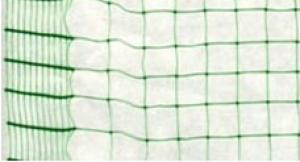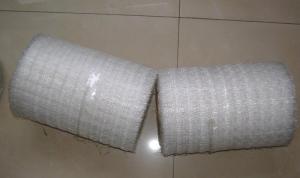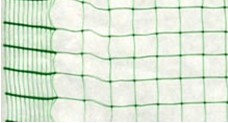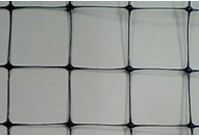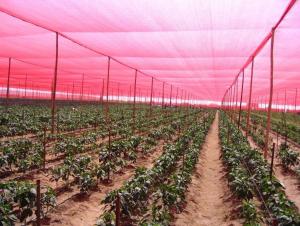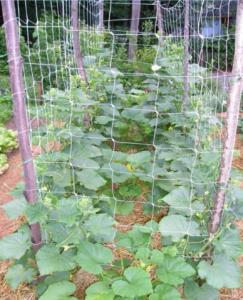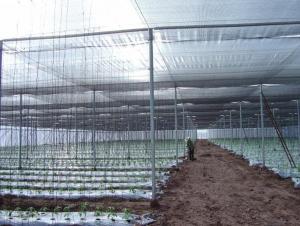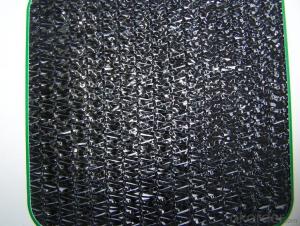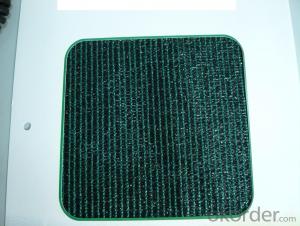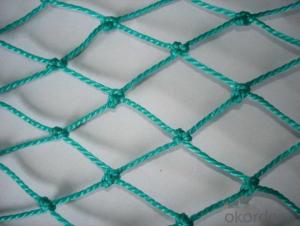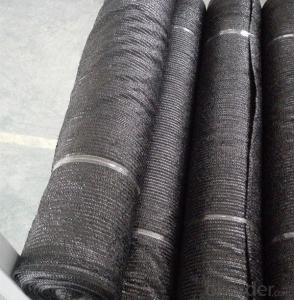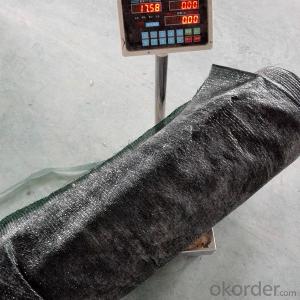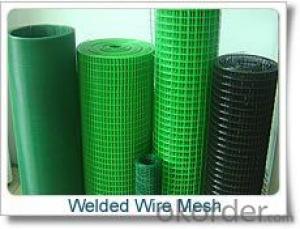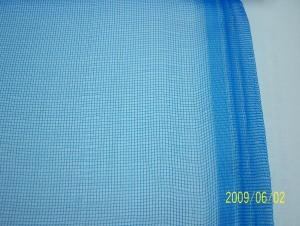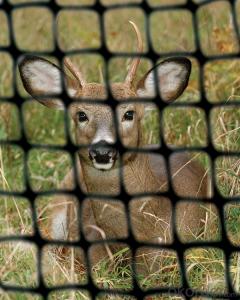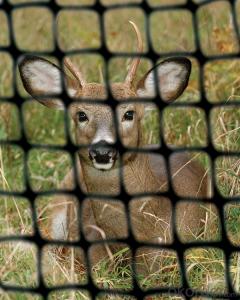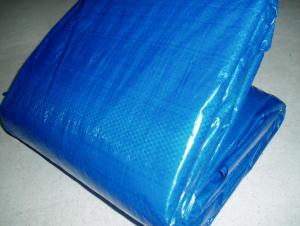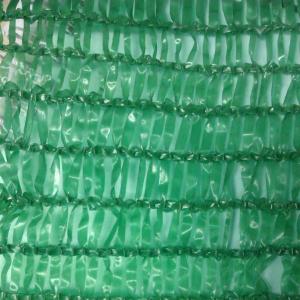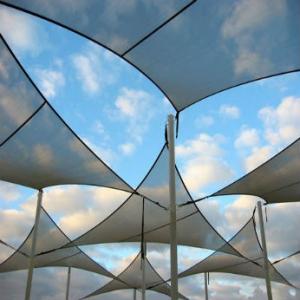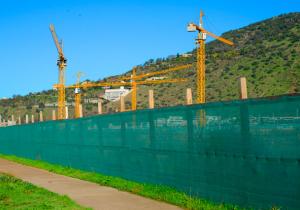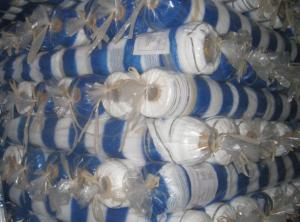35g Anti-Deer Net Rolls of Plastic Netting
- Loading Port:
- China Main Port
- Payment Terms:
- TT or L/C
- Min Order Qty:
- 2000KG m²
- Supply Capability:
- 500T/M m²/month
OKorder Service Pledge
OKorder Financial Service
You Might Also Like
BOP Net /Anti -deer Net 35G / Deer Fence Net
Introduction of BOP NET/Anti-deer Net 35G/ Deer Fence Net;
These products are used as anti-deer net, animal fence, packing net, pallet net, plant support net, and net for agricultural use.
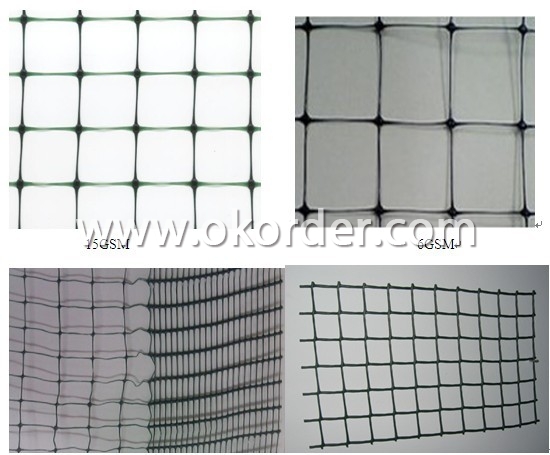
Specificationsof BOP Net/Anti-deer Net/ Deer Fence Net;
|
Material |
MESH SIZE(MM) |
Weight(g/m2) |
Width |
|
PE/PP |
6X6MM,8X8MM,12X12MM, 20X36MM,25X25MM,35X60MM, 60X60MM,130X130MM,150X150MM |
6GSM,10GSM,15GSM,25GSM 35GSM,55GSM From 6gsm to 55gsm |
1M,1.2M,2M,4M |
Mesh Type: Square or rectangular
Based on order, other weaves are also available.
Color: Black, Green, White, Red, Grey, Any color is available.
Minimum life length: 4 years, under normal weather conditions and use.
Applicationof BOP Net/Anti-deer Net 35G/ Deer Fence Net;
These products are used as anti-deer net, animal fence, packing net, pallet net, plant support net, and net for agricultural use.
Packingof BOP Net/Anti-deer Net 35G/ Deer Fence Net:Packed by rolls in plastic film bags with labels inside and then loosely loaded in the container or small packs in cartons.
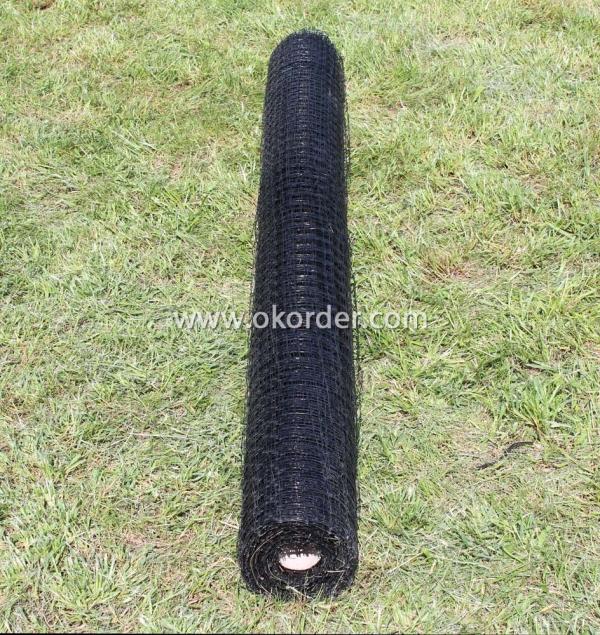
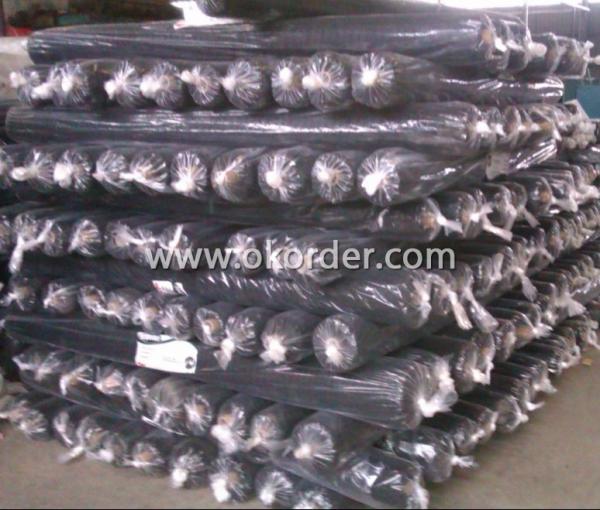
- Q: Are plastic nets resistant to chemical degradation?
- Yes, plastic nets are generally resistant to chemical degradation.
- Q: Can plastic nets be used for packaging industrial equipment?
- Yes, plastic nets can be used for packaging industrial equipment. They provide a lightweight and flexible solution that helps protect the equipment during transportation and storage, offering adequate ventilation and visibility. Additionally, plastic nets are often cost-effective and recyclable, making them a practical choice for packaging purposes.
- Q: How do plastic nets affect waste reduction efforts?
- Plastic nets play a crucial role in waste reduction efforts by effectively capturing and containing various types of waste materials. These nets are commonly used to prevent litter and debris from entering water bodies or being carried away by wind, thereby reducing the amount of waste that ends up in oceans, rivers, or on land. Plastic nets also aid in waste management by facilitating easier collection and segregation of different types of waste, making recycling and disposal processes more efficient.
- Q: Can plastic nets be used for windbreaks?
- Yes, plastic nets can be used for windbreaks. They are lightweight, durable, and can effectively reduce wind speed, making them suitable for protecting crops, gardens, or other areas from strong winds.
- Q: Can plastic nets be used for packaging toys and games?
- Yes, plastic nets can be used for packaging toys and games. They provide a protective barrier while allowing for easy visibility and breathability, making them suitable for packaging small items like toys and games.
- Q: Can plastic nets be used for bee hive frames?
- No, plastic nets cannot be used for bee hive frames. Bee hive frames are typically made of wood or metal and are designed to provide support and structure for the honeycombs. Plastic nets would not provide the necessary stability and durability required for beekeeping.
- Q: Are plastic nets used in the fishing of shellfish?
- Yes, plastic nets are commonly used in the fishing of shellfish. These nets are often used to catch shellfish such as crabs, lobsters, and shrimp. The plastic nets are designed to be durable and resistant to water, making them suitable for use in marine environments.
- Q: Are plastic nets suitable for composting systems?
- No, plastic nets are not suitable for composting systems as they do not degrade or break down naturally.
- Q: How do plastic nets contribute to environmental pollution?
- Plastic nets contribute to environmental pollution due to their non-biodegradable nature, which means they persist in the environment for long periods of time. When these nets are discarded or lost in the oceans, they can entangle marine animals, leading to injuries or death. Additionally, they can break down into microplastics, which are then consumed by marine organisms and can enter our food chain. The improper disposal or inadequate recycling of plastic nets further exacerbates their environmental impact.
- Q: Can plastic nets be used for aquaponics?
- Yes, plastic nets can be used for aquaponics. They can serve multiple purposes in an aquaponic system, such as providing support for plants, acting as a grow bed or raft material, or even serving as a means of filtration by catching solid waste. Plastic nets are a versatile and cost-effective option for aquaponics setups.
1. Manufacturer Overview
| Location | Zhejiang, China |
| Year Established | 2002 |
| Annual Output Value | US$ 10 Million - US$ 50 Million |
| Main Markets | North America Safety Fence, BOP Netting 5.00%; South America Safety Fence, Insect Screen, BOP Netting 8.00% ; Eastern Europe Safety Fence, Insect Screen, Anti-bird Netting, BOP Netting 9.00% Southeast Asia Safety Fence, Insect Screen, Anti-bird Netting, BOP Netting 5.00 % Africa Safety Fence, Insect Screen 1.40% Oceania Safety Fence, BOP Netting, Gutter Guard 9.60% Western Europe Safety Fence, Insect Screen, Anti-bird Netting, BOP Netting, Gutter Guard 34.00% |
| Company Certifications | GBT19001-2000 -ISO9001:2000 |
2. Manufacturer Certificates
| a) Certification Name | |
| Range | |
| Reference | |
| Validity Period |
3. Manufacturer Capability
| a) Trade Capacity | |
| Nearest Port | Ningbo, China |
| Export Percentage | 91% - 100% |
| No.of Employees in Trade Department | 3 |
| Language Spoken: | English; Chinese |
| b) Factory Information | |
| Factory Size: | Above 100,000 square meters |
| No. of Production Lines | Above 10 |
| Contract Manufacturing | OEM Service Offered; Design Service Offered |
| Product Price Range | High; Average |
Send your message to us
35g Anti-Deer Net Rolls of Plastic Netting
- Loading Port:
- China Main Port
- Payment Terms:
- TT or L/C
- Min Order Qty:
- 2000KG m²
- Supply Capability:
- 500T/M m²/month
OKorder Service Pledge
OKorder Financial Service
Similar products
Hot products
Hot Searches
Related keywords
